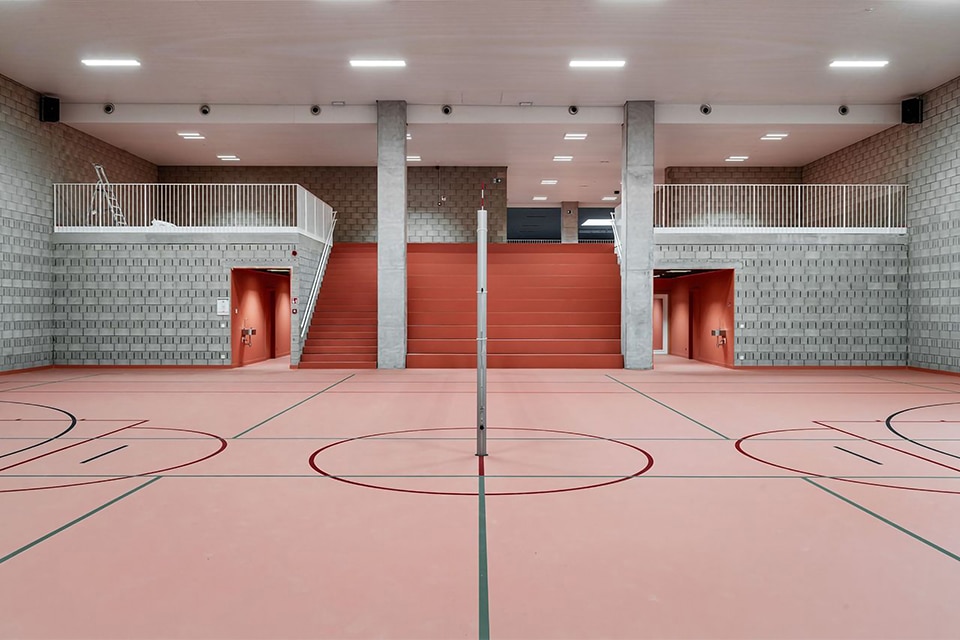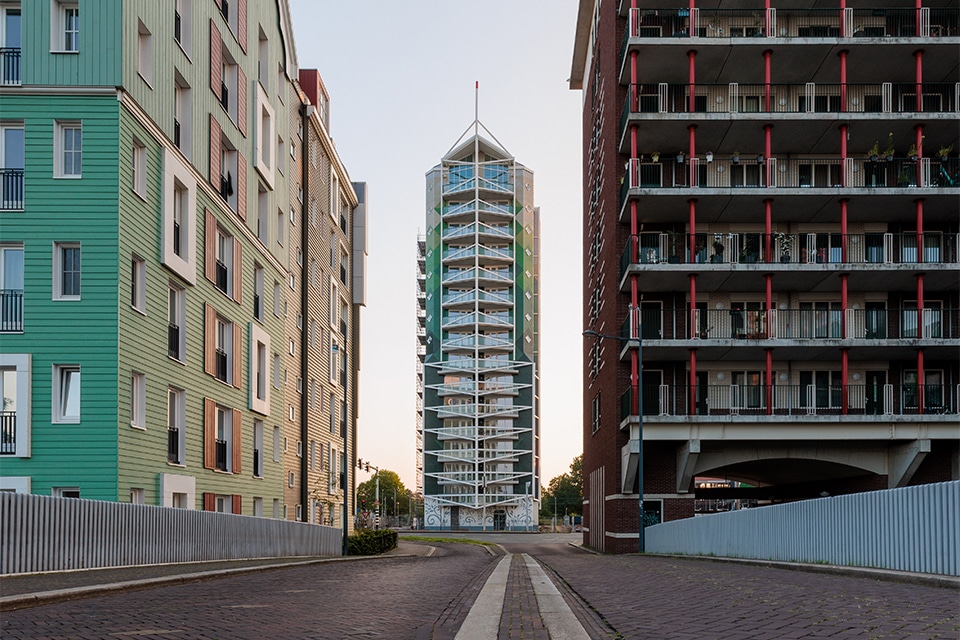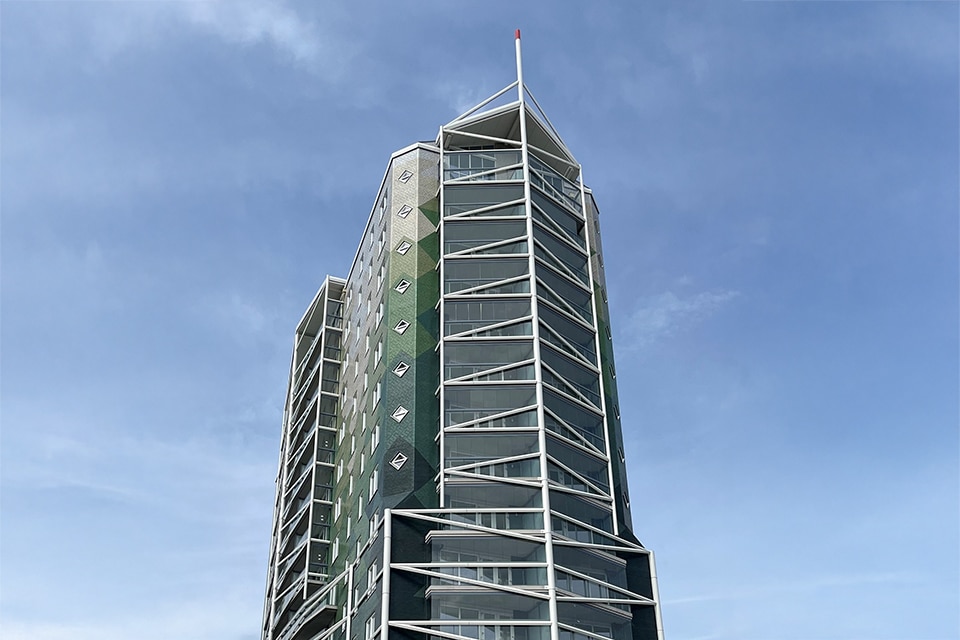
'Architecture is not about buildings, it's about people'
HofmanDujardin believes that architecture is not sec about buildings, but mainly about the people who work, live and/or stay in them. "Since 1999 we have been creating dynamic spaces that work well and feel good," says Michiel Hofman, architect and partner at HofmanDujardin. "In our communications and designs, simplicity, quality, inspiration and a personal approach are central. Moreover, in every design and at all scales we look for the balance between light, air and space, security, expression and connection. Between people, spaces, interior and exterior, so that intuitive use of space is stimulated. Rembrandt Park One fits this perfectly."
This project gave an anonymous and obscure building a valuable new use, believes Thom Zijlstra, architect and project manager at HofmanDujardin. "In our design we started from the strength of the existing structure. Both literally and aesthetically, confirming that reuse can be very rewarding and successful." There are a lot of buildings in our country. "This means that a lot of material is also available, which allows us to save on new raw materials. A mindset that is getting deeper and deeper with clients, contractors and architects." Hofman: "Aesthetics are increasingly giving way to quality. And that is beneficial, because quality makes an impact, retains its value and invites reuse."
'Quality makes impact, retains its value and invites reuse'
Flexibility
For this thinking to succeed, flexibility is needed. From design to technical elaboration and realization. "Especially in the execution, more and more dynamics arise. As a designing party, you have to go along with this." Zijlstra: "The time when the architect was leading in the building process is over. Processes are becoming more fluid and parties are more and more equal in a project." Hofman: "Especially then it is important that values such as simplicity, quality, inspiration and a personal approach are maintained in every phase. But also that you continuously innovate and optimize. To make this possible, we involve as many professionals from the market as possible. A philosophy that Velox also supports and that will continue to strengthen our sector."
Minimal additions, maximum effect
"You don't have to demolish everything and make new," Zijlstra emphasizes. "In Rembrandt Park One, this comes across very strongly. From the first pen mark, we looked critically at what could be retained. And where new construction was necessary, we emphatically sought minimal additions with maximum effect." As an example, he mentions the horizontal lines, which make the building more accessible and strengthen its relationship with nature. But also the realization of two new and lightweight floors, which add valuable space. WITHOUT modifications to the existing foundation. "And also the pavilion design was worked out in such a way that we were able to preserve the foundation, reduce our CO2 footprint and make a positive impact on people and the environment."
Heeft u vragen over dit artikel, project of product?
Neem dan rechtstreeks contact op met Velox.
 Contact opnemen
Contact opnemen




